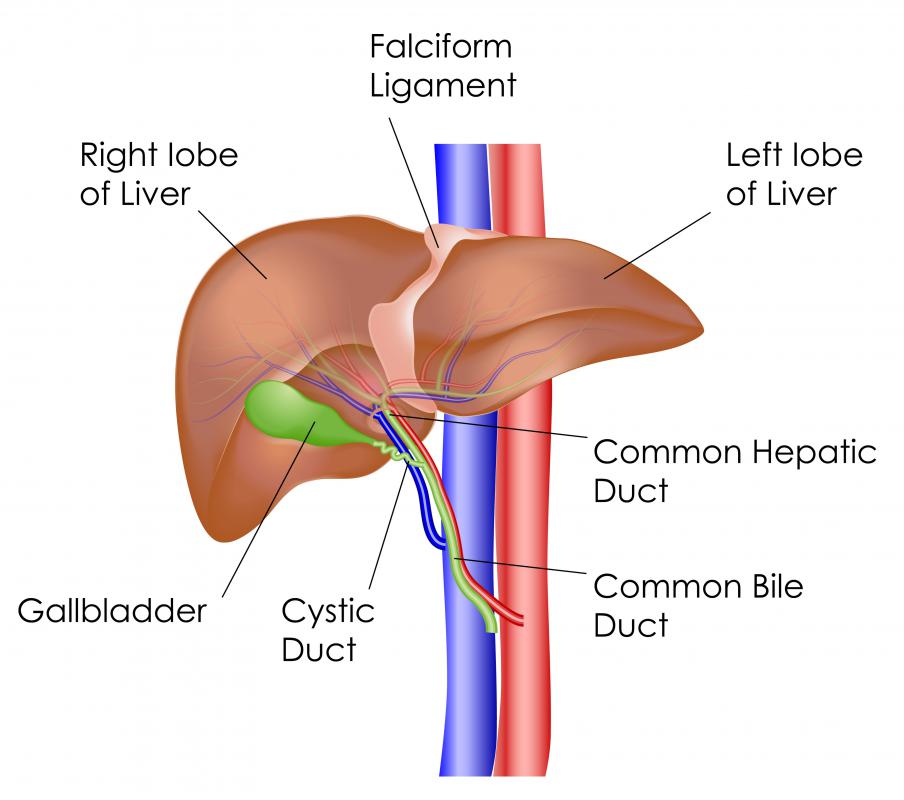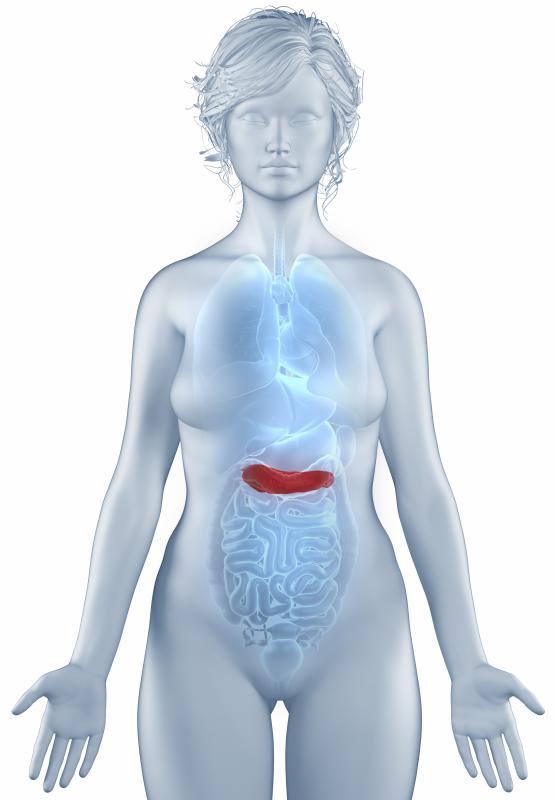At WiseGEEK, we're committed to delivering accurate, trustworthy information. Our expert-authored content is rigorously fact-checked and sourced from credible authorities. Discover how we uphold the highest standards in providing you with reliable knowledge.
What Is the Abdominopelvic Cavity?
In anatomy, there are three organ-containing cavities in the human torso: the thoracic cavity within the ribcage, the abdominal cavity, and the pelvic cavity. Often the latter two cavities are considered as a unit and thus referred to as the abdominopelvic cavity. It is found beneath the diaphragm muscle, which forms the floor of the ribcage, and extends into the pelvis. Within the abdominopelvic cavity are the major organs of digestion — the stomach and intestines — and the reproductive organs. Also included are the accessory organs of digestion like the liver, gallbladder, and pancreas, as well as the kidneys, bladder, and spleen.
Occupying the majority of the space within the torso, the abdominopelvic cavity lies just in front of the spine. To the front of this cavity are only muscle, subcutaneous or stored fat, and skin. Above it is the diaphragm, a layer of muscle that spans the bottom of the ribcage and provides a dome-shaped ceiling for the cavity. Below, the abdominopelvic cavity is contained by the pelvis around it, which forms a cage of bone that is open to the front, and supported by the muscles of the pelvic floor.

Encapsulating the abdominopelvic cavity is a membranous lining known as the peritoneum. This lining consists of a sheet of single-layered mesothelial cells held up by a sheath of connective tissue that is made of the same fibers found in ligaments and tendons. The entire membrane is only a few microns thick and not only surrounds the cavity as a whole but also the individual organs contained within.

That surrounding the cavity is known as the parietal peritoneum. It is affixed to the wall of abdominal muscles around it on their inner surface. A second layer known as the visceral peritoneum covers the organs within. Some organs, like the kidneys, however, sit between these two layers and are therefore referred to as retroperitoneal.
Near the top of the abdominopelvic cavity is the lowermost portion of the esophagus, which comes down out of the thoracic cavity and punctures the diaphragm. It leads to the stomach, which then leads to the small and ultimately large intestines, the bulk of which are contained by the cavity. Adjacent to the stomach are the liver, gallbladder, and pancreas, all of which support digestion, as well as the spleen, an immune system organ, and the kidneys, organs of the urinary system.

The bottommost portion of the cavity houses the lower portions of the large intestine, which ends with the rectum, the bladder, and urinary vessels, and the organs of reproduction. It is surrounded by the pelvic bones: the ilium, ischium, and pubis. Significant to the structure of the pelvic cavity are not only these bones, which protect the organs within, but the pelvic floor muscles. These muscles cross the underside of the pelvis and, in addition to their respective urinary, excretory, and sexual functions, form a “floor” that holds the organs above in place within the pelvis.
AS FEATURED ON:
AS FEATURED ON:


















Discuss this Article
Post your comments